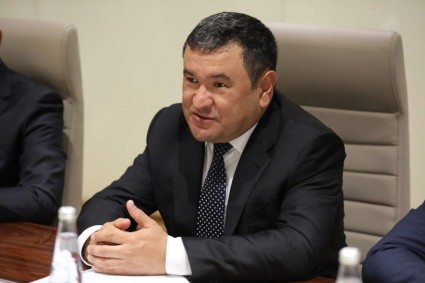Economic activity in Europe and Central Asia improves but growth lags pre-Pandemic levels. Uzbekistan Will Continue Demonstrating Growth in 2023, says the World Bank.
Economic growth for the emerging market and developing economies (EMDEs) of the Europe and Central Asia region has been revised up to 2.4% for 2023, says the World Bank’s Economic Update for the region, released earlier this week.
The pickup in growth reflects improved forecasts for war-hit Ukraine and for Central Asia, as well as consumer resiliency in Türkiye and better-than-expected growth in Russia because of a surge in government spending on the military and social transfers. Excluding Russia and Ukraine, regional output is expected to grow by 3% in 2023.
Nevertheless, growth remains weak relative to the long-term pre-pandemic averages. Overall, growth in half of the Europe and Central Asia countries is expected to be slower or little changed in 2023 than in 2022.
During 2024-25, growth is expected at 2.6% a year, amid a weak expansion in the European Union (EU) – the region’s largest trading partner – high inflation, tighter financial conditions, and spillovers from Russia’s invasion of Ukraine.
Ukraine’s economy is likely to grow by 3.5% this year after a contraction of 29.1% in 2022, the year when Russia invaded the country, thanks to more stable electricity supply, increased government spending, ongoing donor support, a better harvest, and the rerouting of some exports through the country’s western borders.
Türkiye is set to grow by 4.2% this year, reflecting reduced policy uncertainty and resilient consumer demand. However, growth is likely to slow to an average of 3.5% in 2024 and 2025 as domestic demand cools in the face of rising interest rates and gradual fiscal consolidation.
In Russia, surging government spending and resilient consumption are likely to result in growth of 1.6% in 2023, weakening to 1.3% in 2024 and 0.9% in 2025 due to capacity constraints and slowing consumer demand.
In Central Asia, growth is expected to strengthen to 4.8% this year, and is expected to average at 4.7% for 2024 and 2025, assuming that inflation moderates.
Stronger trade and larger inflows of money and people have continued to support economic activity in some economies, notably in Central Asia and the South Caucasus. Armenia, Georgia, and Tajikistan remain the top growth performers in the region for the second year in a row.
Outlook for Uzbekistan
In Uzbekistan, growth is expected to remain close to 5.5 percent in 2023 and accelerate gradually in the medium term. Consumption growth in 2023 is expected to fall as the remittances from Russia continue to decrease.
Import growth is expected to accelerate in 2023 and grow fast in the medium-term to support Uzbekistan’s economic modernization, and with decreasing remittances, the current account deficit will widen.
The fiscal deficit is expected to widen to 5 percent of GDP in 2023 as a result of persistently high energy tariffs, higher expenditure on education, public sector wages, pension and allowances, and lower revenue collections.
Budget consolidation is expected to begin in the medium term, with the budget deficit falling to 4 percent of GDP in 2024 and 3.6 percent in 2025 due to reduced tax benefits and energy subsidies, and increased privatization proceeds. The Government is expected to adhere to its debt limits, with public debt increasing to 36 percent of GDP in 2023 and peaking at 36.6 percent in 2024.
Despite expanded social protection programs, slower growth in remittances and private consumption could limit expected progress in poverty reduction. The national poverty rate is projected to fall marginally to 13.9 percent in 2023.
Downside risks to this outlook include a deterioration in Russia’s economic performance, higher external inflationary pressures, and tighter-than-expected global financial conditions. Upside risks include higher global gold, natural gas, and copper prices and stronger productivity growth due to ongoing structural reforms, the World Bank’s report says.











